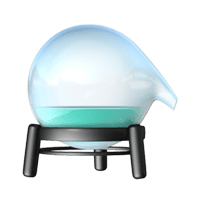本试卷共五道大题,39道小题,满分60分,考试时间90分钟。
知识运用(共14分)
一、单项填空(共6分,每小题0.5分)
从下面各题所给的A、B、C、D四个选项中,选择可以填入空白处的最佳选项。
1. Mr. Hill has two sons. He often plays football with _____________ on Sunday.
A. him B. them C. you D. her
2. My family will go out to dinner _____________ Friday night.
A. on B. in C. at D. to
3. My friend Julie has a guitar, _____________ she plays it really well.
A. but B. so C. and D. or
4. —_____________ does it take to fly from Beijing to Shanghai?
—About two and a half hours.
A. How soon B. How often C. How much D. How long
5. All visitors to the school _____________ wear an ID card, or they are not allowed to enter.
A. must B. could C. would D. might
6. Hi, Mom is an excellent film. It is _____________ than I expected.
A. wonderful B. more wonderful
C. most wonderful D. the most wonderful
7. While I _____________ an email, the computer suddenly went off.
A. write B. will write C. am writing D. was writing
8. My aunt enjoys teaching. She _____________ a teacher for ten years.
A. is B. was C. has been D. will be
9. —What do you usually do in your spare time?
—I _____________ swimming with my parents.
A. go B. went C. am going D. was going
10. Listen! The birds _____________ happily in the tree outside the window.
A. sing B. sang C. are singing D. were singing
11. As the number of children in the town grows, a new school _____________ next year.
A. is built B. will be built C. builds D. will build
12. —Do you know _____________ last Saturday?
—In Zhongshan Music Hall.
A. where will the school band play B. where the school band will play
C. where did the school band play D. where the school band played
二、完形填空(共8分,每小题1分)
阅读下面的短文,掌握其大意,然后从短文后各题所给的A、B、C、D四个选项中,选出最佳选项。
Johnson kicked the soccer ball hard against his bedroom wall.
“Johnson, stop!” his father shouted. “You’re going to __13____ the neighbors.”
Johnson picked up the ball as it flew back toward him, and then he lay onto his bed. His eyes were full of tears.
Several days earlier, there was a big tsunami (海啸) in Japan. It had washed away buildings and destroyed lives.
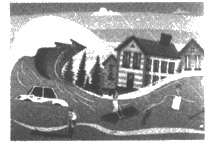
His father, Mr. Reynolds, has a lot of experience of removing debris (碎片) after tsunami. As soon as his father saw the destruction on TV, he knew his skills could be of help to the Japanese people. He called a company that performed __14____ services after tsunamis. They told Mr. Reynolds they could certainly use his help. The company would provide a flat for Mr. Reynolds— meaning Johnson would __15____ in Japan for a year.
Johnson thought about his soccer team, his friends, his school, and everything else he would have to __16____ for the next year. How could his father do this to him?
Lying on his bed for a few minutes had helped Johnson cool down. He sat up, and started putting his clothes into bags.
After he finished packing, Johnson walked into the living room, where his dad and sister were looking at some __17____ Mr. Reynolds __18____ he would work to clean up the mess they were looking at.
One photo showed a group of kids standing on a muddy (泥泞的) soccer field. Johnson suddenly saw himself standing with them, and he realized how __19____ he would feel in the same situation. __20__, people were coming from all over the world to help. Johnson wondered if there might be something he could do to help once they got there. Maybe even playing soccer ball with these kids could take their minds off the mess for a while.
13. A. surprise B. bore C. upset D. disappoint
14. A. cleanup B. health C. food D. information
15. A. volunteer B. live C. train D. travel
16. A. set up B. pick up C. fix up D. give up
17. A. books B. paintings C. photos D. videos
18. A. argued B. explained C. added D. reported
19. A. frightened B. regretful C. strange D. angry
20. A. Suddenly B. Naturally C. Proudly D. Luckily
阅读理解(共36分)
三、阅读下列短文,根据短文内容,从短文后各题所给的A、B、C、D四个选项中,选择最佳选项。(共26分,每小题2分)
A
Many young people write about their hometown heroes who made a big influence on them during the COVID-19 pandemic (流行病). Let’s read what they have written.
| My hometown hero is my older brother, Jack. He always wants to help. During the COVID-19 pandemic, he volunteered his time at the hospital. He went to visit our grandma to make sure she was okay. He also made care packages for families in the community. |
| My mom does everything she can to help our family and other people. She made masks (口罩) for hospital workers. It took her five days to make them all. On April 14, 2020, she went to the hospital to give blood. And she also gave money to the Pet Society to help dogs, cats and other animals. |
| My parents are my heroes because they delivered mails and packages during the COVID-19 pandemic. They walked several miles a day and helped many people. There were some medicines and things people couldn’t get at stores in the packages. |
| My hometown hero is my mother. She works in a supermarket. She not only took good care of me, but also helped with my schoolwork. She thought it was her duty to keep me safe and my life normal during this pandemic. And she made it. |
21. Who is William’s hometown hero?
A. His brother. B. His grandma. C. His mother. D. His father.
22. What did Addie’s morn do during the COVID-19 pandemic?
A. She bought medicines for others. B. She gave money to help people.
C. She gave blood at the hospital. D. She took care of her grandma.
23. Grace thinks her mom is _____________.
A. a responsible parent B. a hardworking worker
C. a skilled teacher D. a helpful volunteer
B
School tests can be stressful. But they might also encourage you to help change the world. Three girls, Kristen, Jenna and Marisa from New York, learned about a growing problem from a reading test they took. The problem is e-waste, short for electronic waste. The girls learned some dangerous chemicals (化学品) in e-waste can harm the environment and people.
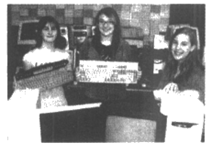
Later in the year, they had to come up with an idea for a science project. They remembered the interesting topic from their test. So the girls started a recycling drive to help other students and the community learn about properly recycling e-waste. They called themselves the E-Waste Girls.
“In our town, people recycle paper, plastic and glass, but not electronics. What can we do?” asked Marisa.
“How about asking our friends if they know how to recycle e-waste?” suggested Jenna.
The girls asked their friends, and nobody had heard anything about it. Many of their teachers didn’t know either. So they taught everyone, including their teachers, to learn about properly recycling e-waste. Then they put recycling boxes in the school hall and asked the students to collect old cell phones, radios and other items. When the boxes were full, they sent them to a special recycling center. The recyclers took out the dangerous chemicals and disposed(处理) of them properly, so that they don’t go into the air or the ground or the water.
One big way people can help reduce e-waste is by buying smartly. So the girls strongly suggested considering electronics made with fewer dangerous chemicals and choosing electronics that will last several years.
The girls’ project also helped them become finalists in the We Can Change the World Challenge, a national student competition. The E-Waste Girls see a bright future in which projects like theirs will not be needed any more.
24. How did the E-Waste Girls first learn about e-waste?
A. A friend told them about it.
B. Recyclers taught them about it.
C. They read about it in a reading test.
D. A teacher talked about it in a science class.
25. Why did the E-Waste Girls start a recycling drive?
A. To set up a recycling center in the town.
B. To take part in a national student competition.
C. To encourage people to buy electronics smartly.
D. To teach people how to properly recycle e-waste.
26. The E-Waste Girls’ story mainly tells us that _____________.
A. recycling e-waste is really difficult
B. students can help to change the world
C. students should do more science projects
D. competitions bring students a bright future
C
Do you have trouble remembering things you’ve read? Scientists at RMIT University in Australia have come up with a new font (字体) that can help you remember—by making words harder to read.
Fonts are used to make letters look a certain way on computers or in books. If you’re writing a report, you can give a different look to the words in your report by choosing a different font. For example, you can make them look like they might look in a book, or you can make them look like handwriting.
Scientists have discovered that people often remembered things better if it was a little bit harder for them to read. The scientists learned that if you are reading words that are difficult to recognize, your brain has to work a little bit harder to make sense of the words that your eyes are seeing. This extra work helps your brain remember the ideas better.
Now scientists at RMIT in Australia have taken this idea and created a font just for remembering things. The font, called “Sans Forgetica”, is a little bit harder to read, on purpose.

The name of the font is a joke of sorts. “Sans” means “without”. When it’s used for fonts, “sans” usually describes a font with simple lines. “Forgetica” sounds like the famous font “Helvetica”. But taken together, the name “Sans Forgetica” means “Without Forgetting”.
There are two main things that make the font harder to read and easier to remember. Probably the most obvious one is that all of the letters have gaps (缺口) in them. When the letters have these gaps, the brain has to fill in the gaps to recognize them. This makes readers slow down and pay attention to what they read.
The other surprising thing about Sans Forgetica is it slants (倾斜) backwards. You may be used to seeing words written in italics—letters that slant toward the right. Stephen Banham, who helped create Sans Forgetica says, “Backslants are only used in maps to show the position (位置) of rivers.”
When someone creates a new font, they often sell it. But RMIT is giving away their font for free, hoping that it will help students and other people who need to remember things.
27. Why was Sans Forgetica created?
A. To help people recognize difficult words.
B. To help students practice handwriting.
C. To help students write special reports.
D. To help people remember things.
28. What idea have the scientists taken to create Sans Forgetica?
A. Reading words with more letters exercises brains.
B. The font with simple lines helps people read quickly.
C. Working hard to recognize words improves memory.
D. People like to read things that are a little hard for them.
29. What can we learn from the passage?
A. Letters in Sans Forgetica font slant toward the right.
B. Letters that slant toward the left are uncommonly used.
C. Gaps in letters make people interested in what they read.
D. The brain pays no attention to the gaps in Sans Forgetica font.
D
We’ve all felt confused before. The feeling of not knowing what the answers or solutions are can make us feel useless, stupid, and cause us to worry.
People are often likely to think the person who has all of the answers is smarter than the one who asks a lot of questions. As a result, people often try to hide their confusion in different ways. People sometimes act as if they have the answers. At other times, people make guesses or create an answer even if they know it isn’t right.
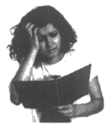
But confusion might actually be a good thing. When we jump to an answer, we don’t have time to explore (探索) the thing we’re confused about. Instead of paying no attention to your confusion, accepting it and taking the opportunity to think about what’s confusing can benefit our learning. In fact, scientific studies show that confusion actually leads to deeper understanding. A 2004 study explored six moods that people feel while learning, including upset, bored, and confused. They found that students who spent more of the lesson confused learned the most. In another study, scientists tried to confuse students by giving them contradicting (矛盾的) information. Students who expressed confusion during the lesson did better on the final test. Not knowing the answer to a problem gives us space to look at different ways to solve it. The feeling of confusion also encourages us to look more deeply into the problem. In the end, this helps us understand the topic on a deeper level.
Confusion is also important for learning your identity (身份). People find out their identity in two steps. The first step is exploration, where you try out different groups and values and see what fits. The next step is commitment, when you decide firmly (坚定地) about some parts of your identity. You make up your mind that you will act in a way that fits your identity. Exploring your identity can feel very confusing. But a study found that people who do the most exploring about who they are have better outcomes such as higher self-confidence and self-esteem (自尊) later in life.
So, instead of trying to hide your confusion, try a new method, ask for help, or research different ways to deal with the problem to work through your confusion.
30. Why does a person try to hide his confusion?
A. Because he wants others to make good judgement on him.
B. Because he has good ability to guess and create an answer.
C. Because hiding his confusion helps him work out a solution.
D. Because telling others his confusion will make them confused.
31. What is the finding of the studies in Paragraph 3?
A. Good understanding leads to less confusion.
B. Confusion can have helpful effect on learning.
C. Digging deeply into a problem may cause confusion.
D. Confusion prevents the development of self-confidence.
32. The word “commitment” in Paragraph 4 probably means “_____________”.
A. promise B. imagination C. challenge D. argument
33. What is the writer’s main purpose in writing this passage?
A. To call on readers to study confusion on a deeper level.
B. To tell readers about the research results on confusion.
C. To explain to readers it’s normal to feel confused.
D. To encourage readers to clear up their confusion.
四、阅读短文,根据短文内容回答问题。(共10分,每小题2分)
Our brains change in many ways as we grow. In September 2020, scientists published (发表) a study about one change that happens. It shows that as we grow, our brain processes words differently. The study was led by Elissa Newport, a doctor who studies and treats the brain at Georgetown University Medical Center.
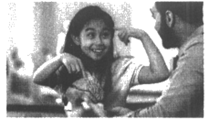
The brain is an organ (器官) in the body. It controls how the body works. It also controls how we think and use our senses. It is divided into a right half and a left half. They are called hemispheres. The two hemispheres connect in the middle to send messages to each other.
The study found that children have speech centers on both sides of their brains. Young children and teens use both sides of their brains to understand language. As we become adults, the brain only uses the left side for this task. This happens slowly over time. It starts around the time we learn to talk. It finishes when we are about 19 years old.
Today’s scientists have high-tech tools that can measure (测量) the brain. Functional magnetic resonance imaging (fMRI) is one of them. It can collect images (图像) of blood flow in the brain. Scientists can study healthy, working brains with it. They can see when a part of the brain is active, or turned on. It shows up as a set of colors in an image.
In Newport’s study, 39 children and 14 adults tried to understand sentences. The team used fMRI to watch their brains. Each fMRI scan took many pictures of the brain. There were patches (斑块) of color in each picture. This showed which parts of the brain were getting the most blood. This was a sign that they were turned on and active.
For the youngest kids, both sides of the brain became active when understanding sentences. The pictures showed many patches of color. By age 19, no activity showed up on the right side.
Other scientists are doing research too. They are studying brain areas that process vision and memory. Newport hopes to combine (结合) her study results with work by those scientists to get a more “complete map” of how brains work.
34. What does the study that was published in 2020 show?
35. What does the brain do as an organ?
36. According to Newport’s study, from what age do people only use the left side of their brains to understand language?
37. What is the fifth paragraph mainly about?
38. Why does Newport hope to combine her study results with others’ work?
书面表达(共10分)
五、文段表达(10分)
39. 从下面两个题目中任选一题,根据中文和英文提示,完成一篇不少于50词的文段写作。文中已给出内容不计入总词数。所给提示词语仅供选用。请不要写出你的校名和姓名。
题目①
你校英语社团正在招募志愿者为国际学生线上讲述中国非物质文化遗产(intangible cultural heritage)故事,传播中国文化。假如你是李华,请你用英文给该社团老师写一封自荐信,内容包括:你的基本信息,申请成为志愿者的理由及作为志愿者你能为讲述中国故事做些什么。
提示词语:be good at, spread, video, history, kite
提示问题:· What’s your basic information?
· Why would you like to be a volunteer?
· What can you do as a volunteer?
Dear Mr. Smith, I am interested in volunteering to tell stories about China’s intangible cultural heritage to international students online. ___________________________________________________________________________ ___________________________________________________________________________ Thank you for your consideration. And I am looking forward to your reply. Sincerely, Li Hua |
题目②
掌握了正确的方法,做事往往能收到事半功倍的效果。反之,则会事倍功半。
某英文网站正在开展以“改进学习方法“为主题的征文活动。假如你是李华,请用英语写一篇短文投稿,谈谈你通过改进学习方法提高学习效果的一次经历,主要内容包括:你学习中遇到了什么问题,你是如何通过改进方法解决这个问题的,效果如何。
提示词语:remember words, change, write, use, increase
提示问题:· What problem did you have in your study?
· How did you improve your ways of learning to solve the problem?
· What was the effect?
Proper ways of learning bring good results. ________________________________________ ___________________________________________________________________________ ___________________________________________________________________________ ___________________________________________________________________________ |
【试题答案】
知识运用
一、单项填空
1. B 2. A 3. C 4. D 5. A 6. B 7. D 8. C
9. A 10. C 11. B 12. D
二、完形填空
13. C 14. A 15. B 16. D 17. C 18. B 19. A 20. D
阅读理解
三、阅读短文,选择最佳选项。
21. A 22. C 23. A 24. C 25. D
26. B 27. D 28. C 29. B 30. A
31. B 32. A 33. D
书面表达
四、阅读短文,回答问题。
34. As we grow, our brain processes words differently.
35. It controls how the body works, how we think and use our senses.
36. 19 years old.
37. How Newport’s study was carried out.
38. To know more about how brains work.
五、文段表达
39. 参考范文:
题目①
Dear Mr. Smith,
I am interested in volunteering to tell stories about China’s intangible cultural heritage to international students online.
I am Li Hua, a boy from Class 2, Grade 9. I love Chinese culture very much and I’m good at English. I hope I can spread Chinese culture by telling stories about our intangible cultural heritage. If I have the chance, I can make videos to tell international students the history of kites and teach them to make kites, I’m sure they will be very interested in it.
Thank you for your consideration. And I am looking forward to your reply.
Sincerely,
Li Hua
题目②
Proper ways of learning bring good results. When I was in Grade 7, I remembered new words just by reading them from the word list, and I forgot them easily. Then I decided to change my ways. I started to write the words when I read them. I also tried to use them in sentences. Besides, I reviewed the words very often. As a result, my vocabulary increased greatly.
